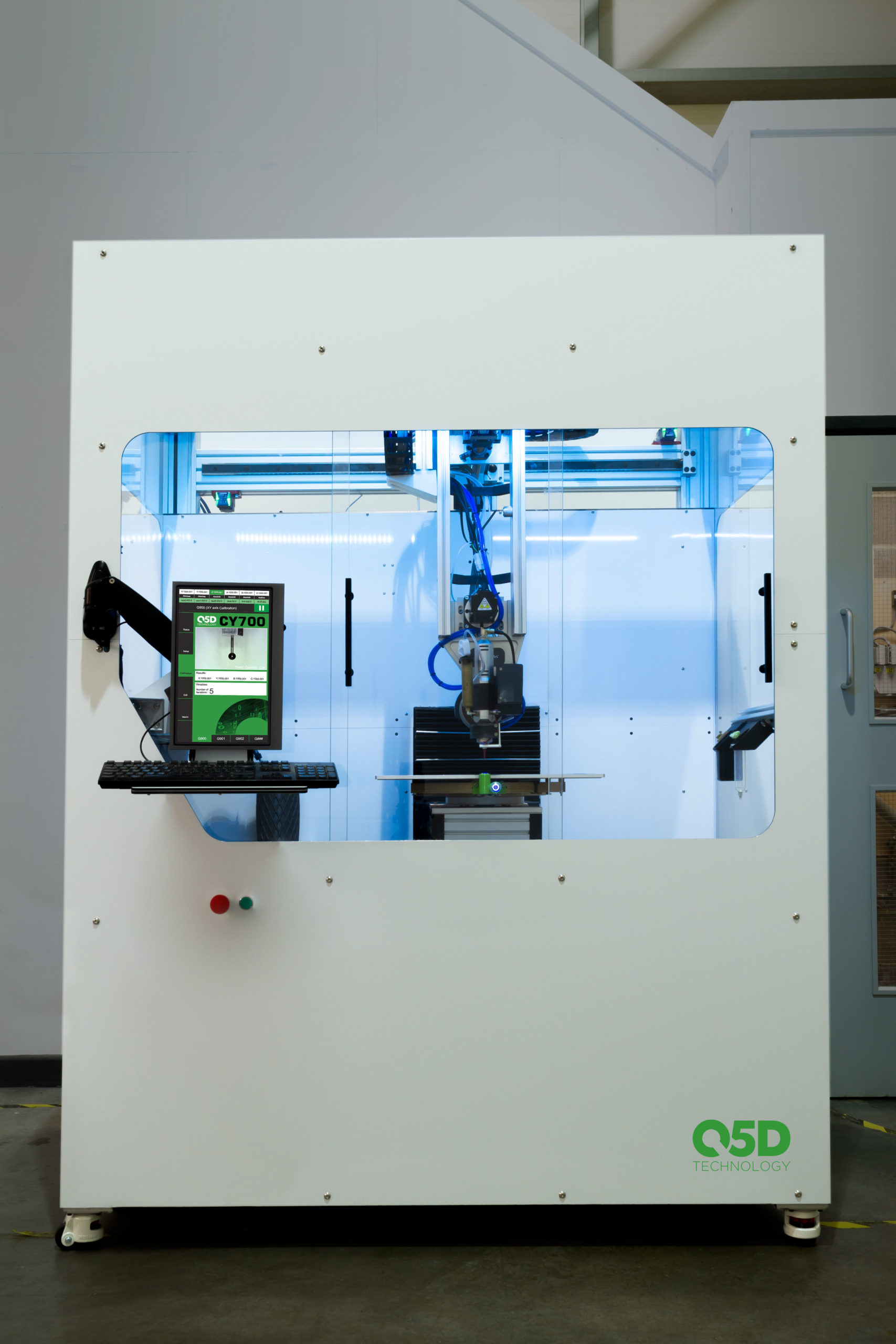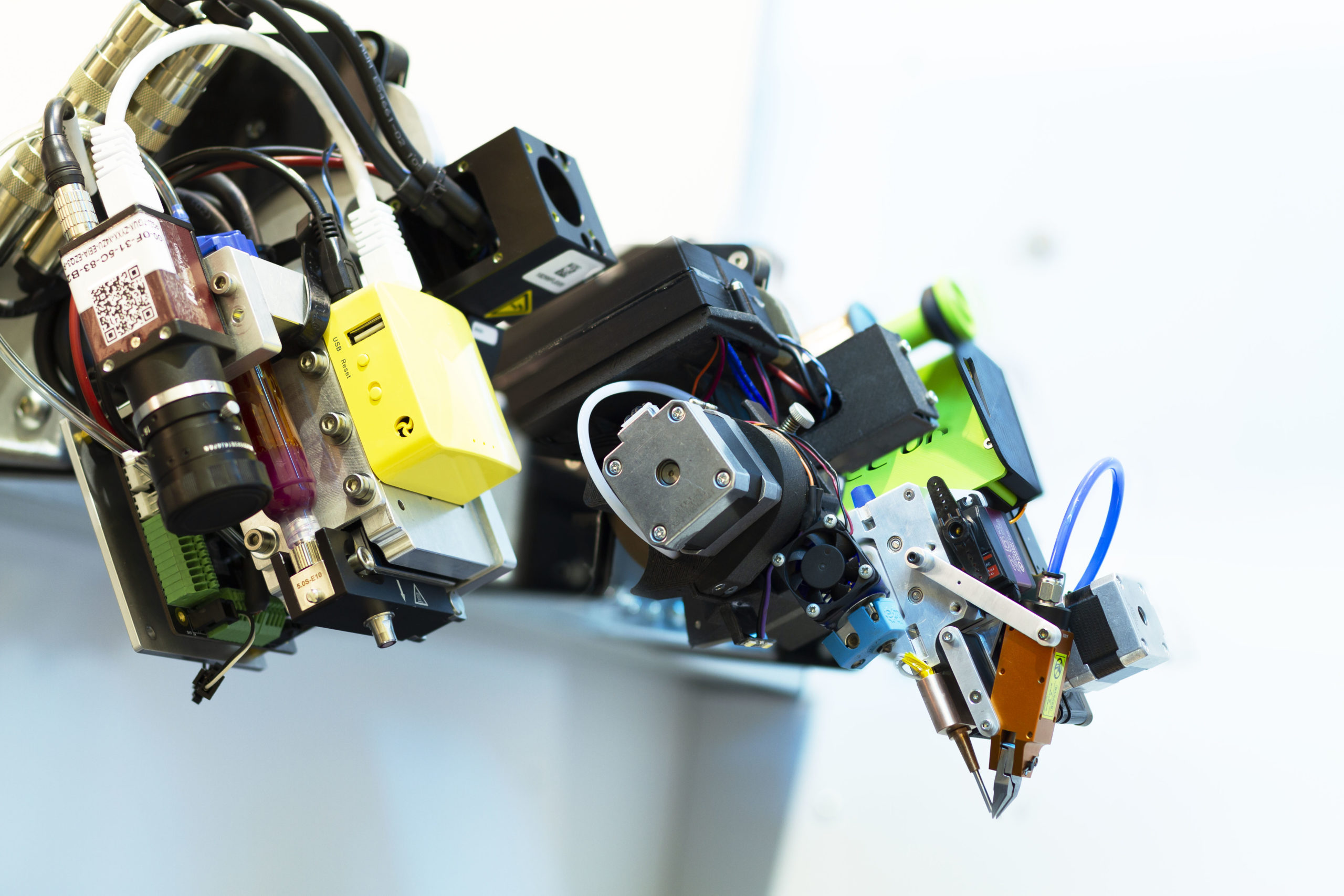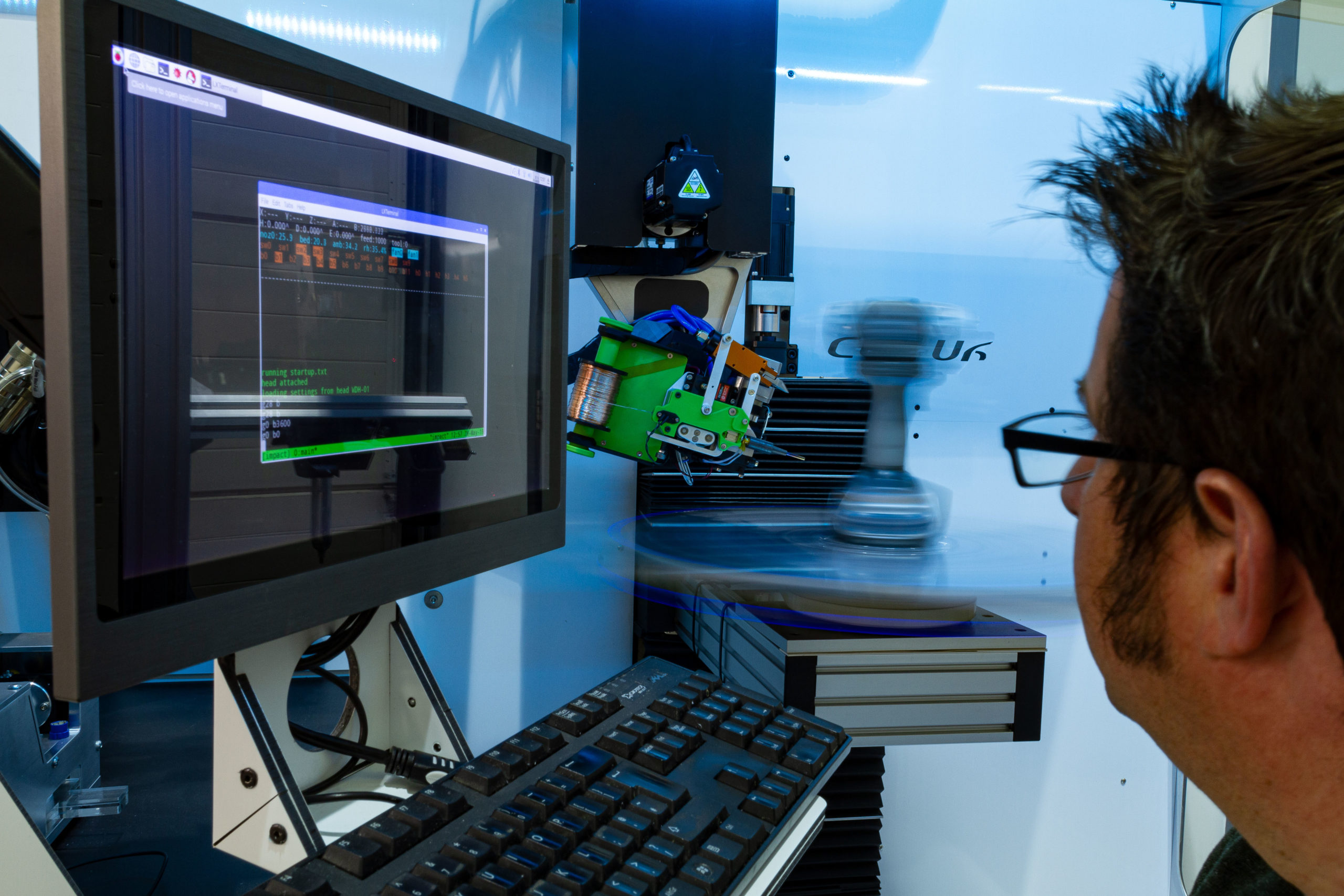UK robotics company Q5D Technologies Limited closed a $2.7 million seed round to accelerate the automated manufacture of wiring harness for a wide range of products, from fighter jets to fridges. An alumni of the global venture capital firm SOSV’s hardtech startup program HAX, Q5D, makes tools that add electrical conductors to products robotically.
Led by Chrysalix Venture Capital, a global venture capital fund with a long history of commercializing step-change innovation for resource-intensive industries, the round also had participation from UK early-stage venture capital firm Rainbow Seed Fund and returning investor SOSV, which operates early-stage startup development programs.
According to Q5D, current manufacturing processes require the wiring in many products to be done by hand, pretty much in the same way it has been done for the last decades. As it is laid up by hand on a pin-board and then pulled through holes in the structure of the product, again, by hand. Q5D describes it as “one of the last parts of the mass-manufacturing process to hold out against automation.”
Eager to disrupt this archaic process, the robotic tools being developed at the startup’s headquarters in Bristol can be used to automate the manufacture and assembly of wiring loom, thereby eliminating human error, improving safety, increasing production speed and accuracy, maximizing connectivity, lowering weight and material costs, and reducing product recall. Although the company’s ambition is to disrupt the global wiring harness market, it has only just begun its journey. It is still relatively small as it builds the team that could drive the technology forward in the future.
“Laying wiring inside of products is one of the most manual and tedious parts of manufacturing. Q5D’s process and products are fundamental in closing the loop for automation in advanced manufacturing,” said Duncan Turner, General Partner at SOSV and Managing Director at HAX.
So far, Q5D has created an automated tool called CU500, which combines five-axis 3D printing, embedded wiring, and printed electronics. The fused filament fabrication (FFF)-based system can switch heads to add polymer, printed electronics, wires, and surface mounted components to create complex, functional structures, otherwise known as Additive Interconnect Devices (AID)––a part made using additive manufacturing with integrated electronic circuit traces.
Capable of printing with PEEK, ULTEM, ABS, PETG, Nylon, glass, and carbon-filled materials, Q5D’s machine can create polymer structures with smooth curved surfaces, up to 10 times faster than existing FFF printers. Moreover, the company states that by embedding wires into the polymer, CU500 can make 3D structures capable of power applications and data.
Q5D co-founder and CEO Stephen Bennington explains that the CU500 not only improves quality and even product safety but makes it possible to increase the complexity of the wiring in a product without increasing cost or weight. “A technology like this makes you leaner and more responsive; no longer do you need to keep a warehouse of spares, all you need is a CAD file and one of Q5D machines and you can make everything you need to order,” he suggests.
To create the new 3D printer, Q5D combines the knowledge, IP, and skills of two highly innovative UK high-tech companies. On the one hand, there’s CEL-UK, a designer of innovative, high-quality 3D printers since 2008. Following the launch of its proprietary Robox 3D printer on Kickstarter in 2013, it developed a five-axis platform that incorporated a 3D printer and silver-based printed electronics but was frustrated that the silver paste needed to be cured in an oven. The solution to CEL-UK’s challenge was to team up with micromachining expert M-Solv, which had developed a technology that could cure and sinter much less expensive copper inks using a laser, so that meant no separate ovens. The duo was a perfect match, and in April 2019, Q5D emerged.
Currently, the company is getting a lot of attention from the aerospace and automotive sectors, so it is focusing on customers ranging from small space companies like Oxford Space Systems to large multinational aerospace manufacturers like Safran, as well as innovative automotive and consumer electrical businesses with the added qualification that its technology can be used in almost any sector that is interested in advanced manufacturing.
The startup also recently announced a collaboration with LEHVOSS, the University of Exeter’s Centre for Additive Layer Manufacturing, Victrex, FDM Digital, and GRM Consulting, to advance 3D printing of high-performance aerospace polymers. The project, called Overprinting with High-performance Polymers, will progress through several test stages before finally using Q5D’s five-axis additive platform to overprint onto composite sheet materials using proprietary polymers.
“This is a time of great change—the rapid electrification of our transport systems and the increasing function of everything from washing machines to mobile phones means that wiring is becoming more complex and labor-intensive. The way the world has made wiring for the last 80 years has to change,” concluded Bennington.
Subscribe to Our Email Newsletter
Stay up-to-date on all the latest news from the 3D printing industry and receive information and offers from third party vendors.
You May Also Like
Polls of the Week: Are 3D Printed Guns a Threat and Should We Regulate Them?
One of the most controversial topics in the 3D printing industry, hands-down, is guns. It’s been a major point of contention for years, and people typically have very strong opinions...
3D Printing News Briefs, April 3, 2024: Kickstarter FDM 3D Printer, Artificial Eyes, & More
In 3D Printing News Briefs today, we’re talking about an FDM 3D printer on Kickstarter, advancements in artificial eye creation, and 3D printed solenoids for electromagnets. Then we’ll move on...
Daring AM: The Global Crackdown on 3D Printed Firearms Continues
In the last few years, a surge in police raids uncovering 3D printed guns has led to concerns about their growing association with criminal gangs. Although typically seen as inferior...
Daring AM: Canada Tackles Increase of 3D Printed Gun Arrests and Sentences
Recent incidents in Canada have brought to light the arrest of individuals for possessing illegal 3D printed firearms, among other charges. These incidents, which resulted in multiple arrests, serve as...
































